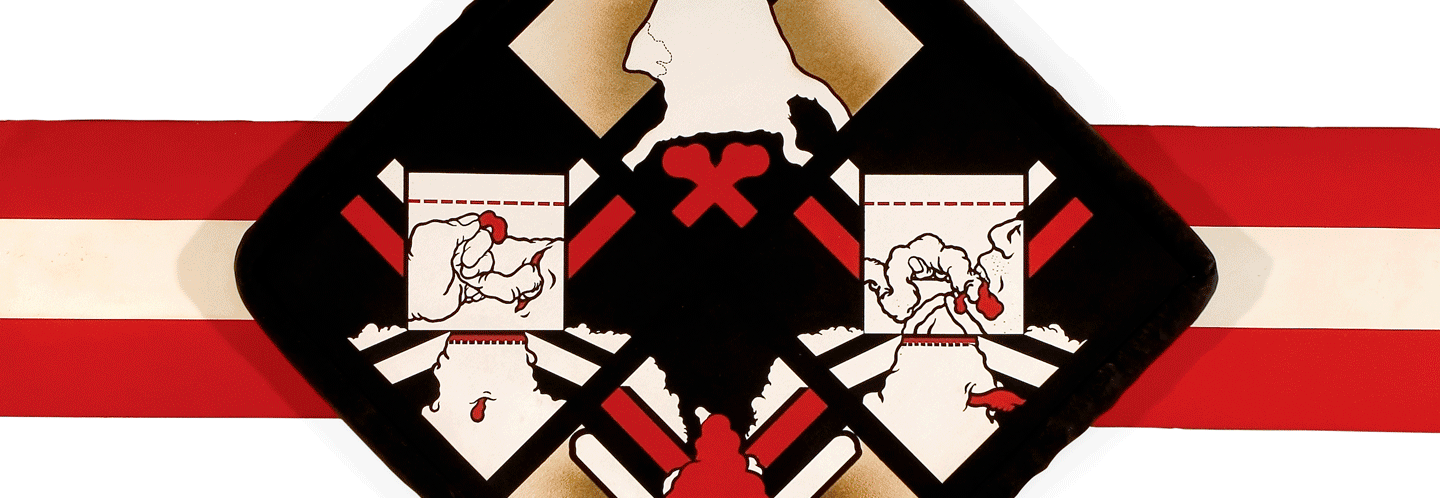April 5–June 3, 2018
Entre Construção e Apropriação: Antonio Dias, Geraldo de Barros, Rubens Gerchman nos anos 60 (Between Construction and Appropriation: Antonio Dias, Geraldo de Barros, Rubens Gerchman in the ‘60s) is one of SESC São Paulo’s many initiatives that affirm, qualify and critically review Brazilian art in the 20th century establishing a relevant correlation with the present. Running from April to July 2018 at SESC Pinheiros, the exhibition makes an accurate reading of a remarkable moment in local art history during the ‘60s, highlighting and comparing the work of three seminal Brazilian artists from those turbulent years: Antonio Dias (Campina Grande-PB, 1944); Geraldo de Barros (Chavantes-PB, 1923) and Rubens Gerchman (Rio de Janeiro-RJ, 1942).
Curated by Brazilian writer João Bandeira, the exhibition features approximately 50 works by the artists—drawings, paintings, collages, objects and assemblages—that establish a dialogue in the exhibition space. According to Bandeira, these productions include elements of prior constructive poetics (Concretism and Neoconcretism) in combination with cultural industry and popular culture references that were appropriated by the artists and contributed to the new trends that would later be described by Hélio Oiticica as Nova Objetividade Brasileira (New Brazilian Objectivity). Part of this pictorial and figurative production became known in Brazilian art history as Nova Figuração (New Figuration), which converged with the procedures from New Realism and Pop Art.
At that point, a new public debate platform was being fostered in the arts, arising in a tumultuous political period in Brazil, since the beginning of the ‘60s, the first years of the military dictatorship. The debate led to initiatives spearheaded by Waldemar Cordeiro in São Paulo—Proposals 65 and 66—and Hélio Oiticica in Rio de Janeiro—Nova Objetividade Brasileira, in 1967. They and their peers helped to build a fertile exchange of ideas and foster deliberations on the agenda at the time. Concurrently, notable exhibitions, such as Opinion 65 and 66, gained momentum, artists’ writings became prestigious, art critique was renewed and some art productions were in the spotlight.
The selected pieces range from 1960 to 1967 and outline the transformation process of the featured artists’ artwork, each in their own way and within their own area of interest. Ranging from paintings to objects, they break with the two-dimensional tradition of landscapes and the elements of distinction on canvas. Geraldo de Barros partially turns away from experimental photography and the limits of Concretism to contemplate an art that is filled with pop inspiration by painting on advertising posters.
Antonio Dias, nicknamed Sertanejo Dias by Mário Pedrosa, takes on the influence of comics and the visceral life of the chaotic urban day-to-day, evoking clashes, powerful human feelings, the presence of violence and the red of life. Rubens Gerchman, in turn, moves away from his former expressionist work to arrange compositions where social interaction is a major point of interest and the notion of crowds, in their many forms, becomes a visual essay.
These formal and conceptual signs conjoin current works by Brazilian artists and manifest themselves even in their most recent pieces. According to the curator, “even if the issues contended with in those pieces unfolded over time, they remain recognisable and relevant in the work by artists of more recent generations—especially when it comes to new stands taken in light of the content, means and ways of industrial culture.” Hence the topicality of this production and legacy.
SESC São Paulo’s programme continues to highlight Brazilian contemporary art, thereby contributing to a historical and critical view of this production linked to the current context. The first half of 2018 will see this line of interest completed by the exhibitions: Lugares do Delírio (Places of Delirium), on at SESC Pompeia from April to June, and Yoyo, tudo que vai volta (Yoyo, everything that goes around, comes around), which opens in May at SESC Belenzinho.


